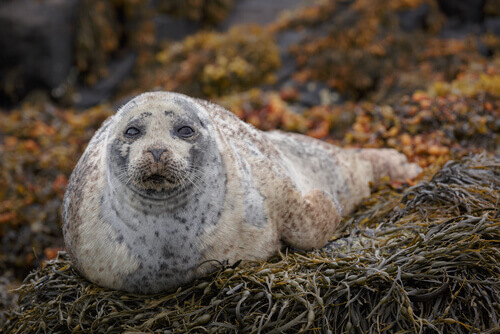Why Is the Seal Known as the Water Dog?
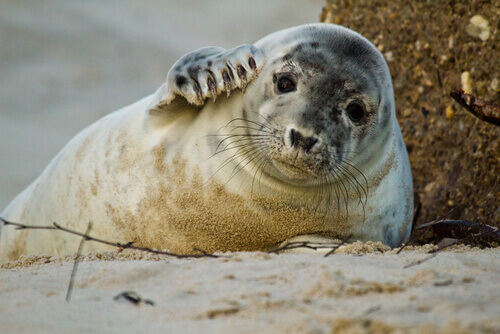
It spends many hours lying in the sun on the seashore, has a robust body and is an agile swimmer. The seal reminds us in many ways of a dog that loves water. In this article we’ll tell you all about it.
Characteristics of the seal
Its body is long and uniform, as it has adapted to the marine environment in which it lives: this way it can swim without problems and catch its prey. Its extremities are short and flat, as it uses them as fins to propel it through the water.
The seal doesn’t ‘walk’ very well on land, it practically slides over rocks or sand helping itself with its belly.
The two characteristics of the seal that differentiate it from other marine pinniped mammals —such as walruses or sea lions— are that they lack an outer ear and their hind limbs are backwards oriented.
Additionally, the seal’s fur is dense and short in adults. As it doesn’t offer sufficient thermal protection against the cold, the seal has a very thick layer of subcutaneous fat… which can get to a quarter of its body weight!
Seal behavior
Unlike sea lions, seals don’t form very large colonies. Some even stay only with their partner —they’re monogamous— or in a tribe of three or four adults. They have the ability to swim long distances and dive very deep —up to 600 meters (2000 feet) — to catch their prey. They’re not migratory and prefer the coasts of the bays, both with rocks and sand.
When the female breastfeeds her young, its milk is high in calories and fat. Thus, the puppy can endure the long absences of the mother, which goes out to look for food —fish, crustaceans and cephalopods— and can take hours to return.
At the North Pole, those babies left alone are captured by polar bears, which mainly feed on seals.
Species of seals
Currently, there are 19 species of seals, out of which we highlight the following as the most ‘famous’ or due to the specific places they live in:
1. The grey seal
The grey seal — in the photo at the beginning of this article— lives in the North Atlantic waters, and the colony with most specimens is located on Sable Island, Canada. It’s large, and the males —with dark fur— can weigh up to 300 kilos (660 lbs) and measure three meters (10 feet) in length. In contrast, females are much smaller and of a lighter color.
2. The Baikal seal
Also called nerpa, it’s the only seal species that lives in freshwater, more precisely in Lake Baikal, in Siberia. In addition, it’s the most long-living one, reaching up to 55 years of life. The skin is white or black with gray spots. Moreover, it spends a lot of time on rocks surrounded by water, and can last 70 minutes without coming to the surface to breathe.
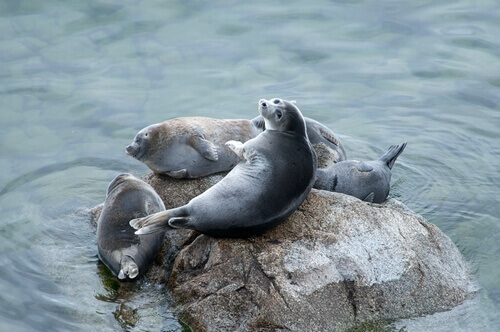
3. The Weddell seal
It lives in Antarctica; it doesn’t migrate but moves according to the state of the ice. In this case, females are larger than males. Moreover, thanks to the concentration of myoglobin in the blood, they can dive up to 600 meters (2000 feet) and spend an hour underwater without breathing.
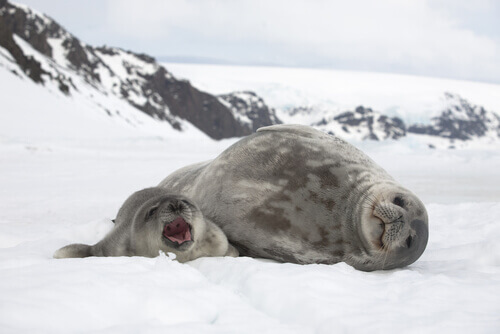
4. The Mediterranean monk seal
It’s one of the rarest seal species and is in serious danger of extinction. Colonies with few specimens are located on the coasts of Turkey, Greece, Mauritania, and Madeira Island. Additionally, these seals have a dark color with spots all over their bodies, which allows them to identify each other.
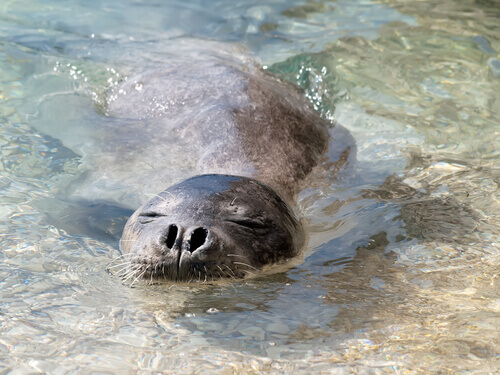
5. The common or harbor seal
It inhabits the entire coastline of temperate and cold seas in the Northern Hemisphere, and is the widest spread seal species. Also, they’re brown, gray or cinnamon in color, have curved nostrils and live in families in rocky areas. Furthermore, within a few hours of birth, baby seals can swim without any problem.
